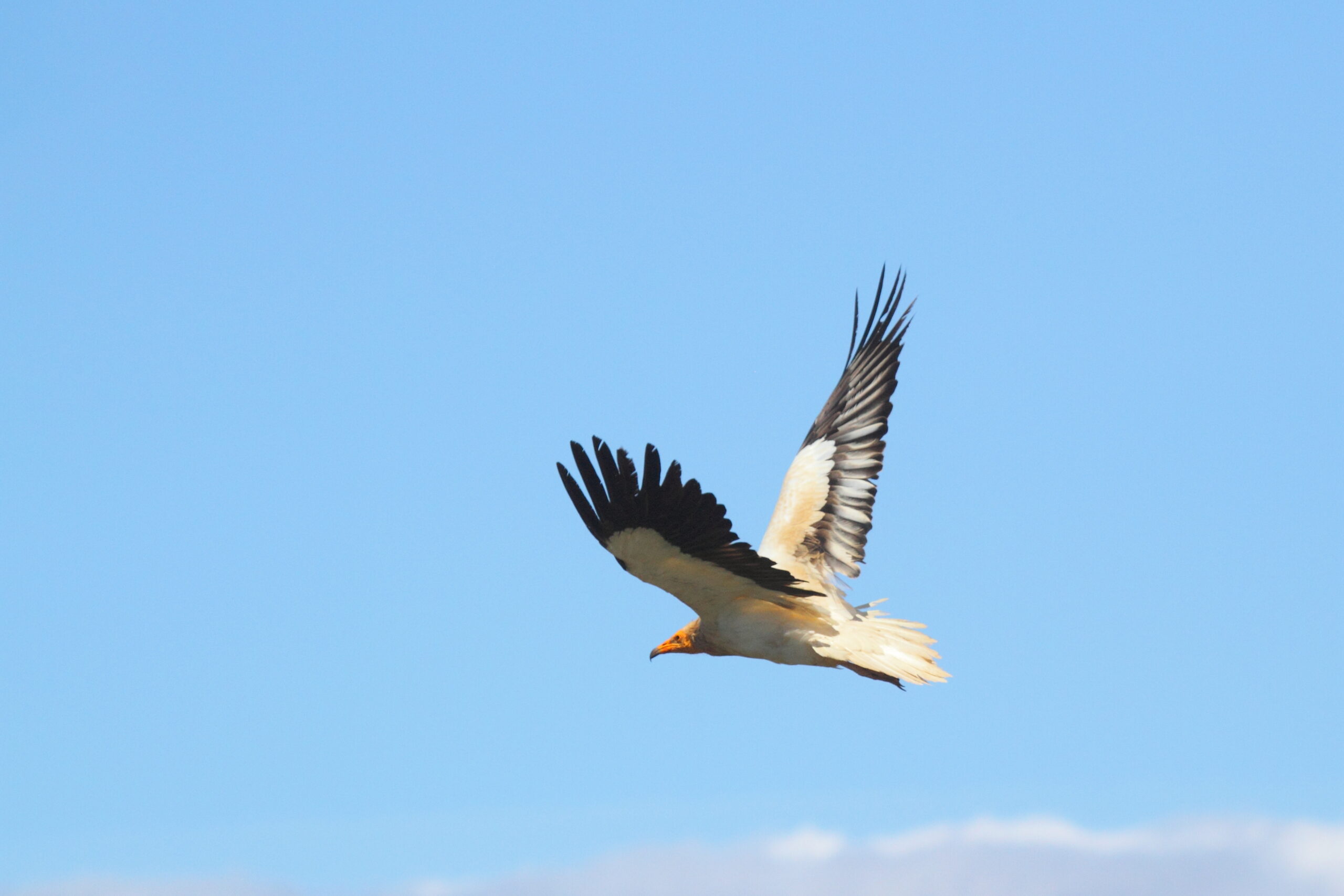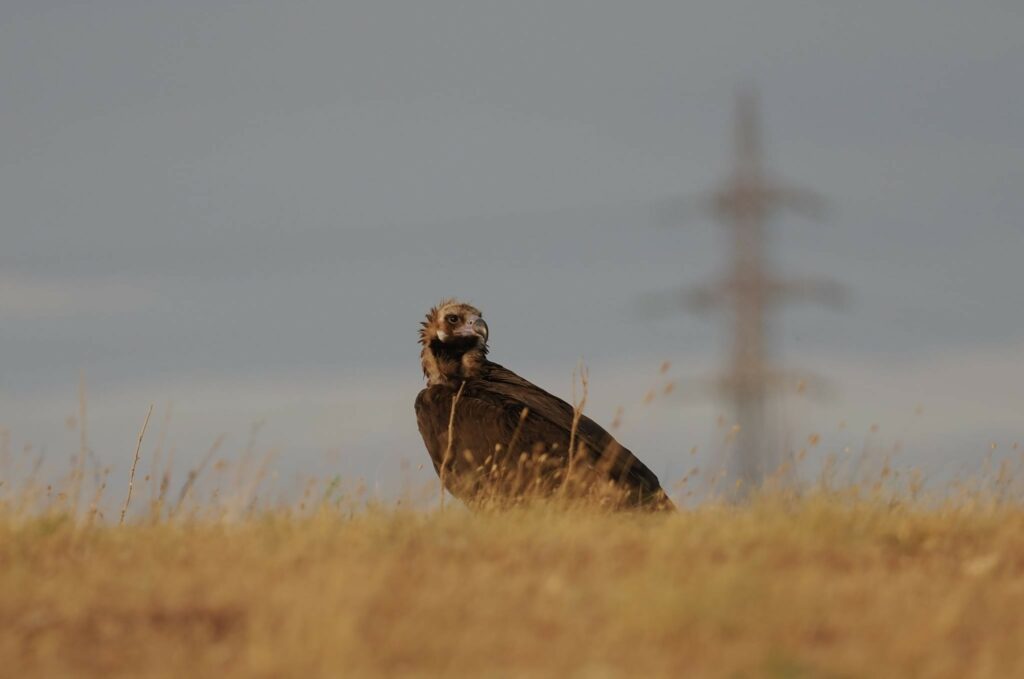
Spain is home to the most significant population of carrion-feeding birds in Europe, both in terms of species diversity and population size. To help conserve the important population in Spain, the LIFE+ FEEDING SCAVENGERS led by the CBD-Habitat Foundation has been implementing conservation actions since 2014. These efforts aimed to restore the natural feeding habitat for Cinereous Vulture and other avian scavengers, including Griffon Vultures and Egyptian Vultures in Central Spain. Yesterday, the project had its official closing ceremony. What has the project achieved over the past few years for the necrophagous birds of Spain?
Why was this project needed?
The mechanisation of agriculture since the second half of the 20th century reduced the food availability for scavenging birds. At the same time, the numbers of extensively farmed livestock have decreased in some areas over the last few decades. Furthermore, European legislation banned leaving cattle carcasses in the countryside due to mad cow disease, which resulted in a widespread decrease in food availability. All this, together with the illegal use of poison, led to a significant decline in the populations of vultures and other Iberian and European scavengers. So, the LIFE Feeding Scavengers project aimed to restore, an appropriate feeding scenario for necrophagous birds, in which free-ranging livestock carcasses are once again considered one of the main available sources of food.
Actions and Results
The actions implement focused on improving the conservation status of the Cinereous Vulture and the rest of the target species by improving the food availability conditions.
The Feeding Programme

The Feeding Programme managed to maximise the amount of biomass from traditional extensive livestock farming. The programme was developed based on four factors to ensure the necessary quantities of each type of food, their geographical distribution and cover the needs of the necrophagous species. These factors are:
– Defining the geographical scope.
– Assessing the populations of necrophagous species.
– Estimating feeding requirements.
– Quantifying food sources.
Encouraging the dispersal of food
The active participation and involvement of stockbreeders are essential in the conservation of Spain’s necrophagous birds. The project established agreements with 518 extensive livestock farms. In total, the farms the project collaborated with had a vast herd of over 105,000 sheep, 18,000 goats, almost 8,000 cattle, 8,000 pigs and 479 horses, covering an area of more than 500,000 hectares of grazing land.
Furthermore, a legislation in Castilla y León introduced the possibility to leave carcasses of certain types of livestock in the wild as long as certain health conditions comply that guarantee no risk to public health and environment, and only in certain specifically established zones; the so-called Protection Areas for the Feeding of Necrophagous Species of Community Importance (ZPAEN). In the first year of the Life project, 39 tonnes of food were provided in the ZPAEN and, in four years, this amount has multiplied by 4, reaching 155 tonnes.
Monitoring and evaluating food consumption in ZPAEN
The project monitored 490 carcasses in 87 extensive livestock farms with an estimated biomass of 29.57 tonnes. The target species appeared at 445 carcasses; 91% of those monitored and 94% of those that were consumed. The main feeders were the Griffon Vulture (85% of the carrion consumed), followed by the Cinereous Vulture (48%).
Supplementary feeding: Building and managing mobile feeding stations
In some areas with a significant presence of necrophagous species but low food availability, it’s necessary to resort to other resources. For necrophagous species, this means placing food at fenced-off feeding stations. The Life Feeding Scavengers project built ten supplementary feeding points and put them into operation at fenced-off feeding stations.
Survey of livestock farmers and the local population
The project also wanted to see the impact the project had on society. More specifically, the knowledge, awareness and attitude livestock farmers and local community had towards the species. It carried out a thorough survey, and the good news was that 87.2% of those surveyed believe the presence of necrophagous birds is beneficial to a varying degree.
You can learn more about this project from the entire report.
LIFE+ FEEDING SCAVENGERS

The LIFE+ FEEDING SCAVENGERS Project focused on restoring natural feeding habitat for Black Vulture, and other Avian Scavengers in Central Spain. The CBD-Habitat Foundation is the coordinating beneficiary, alongside the Department of Development and Environment Board of Castile and Leon’s regional government and the Natural Heritage Foundation of Castile and Leon, both as associated beneficiaries.








